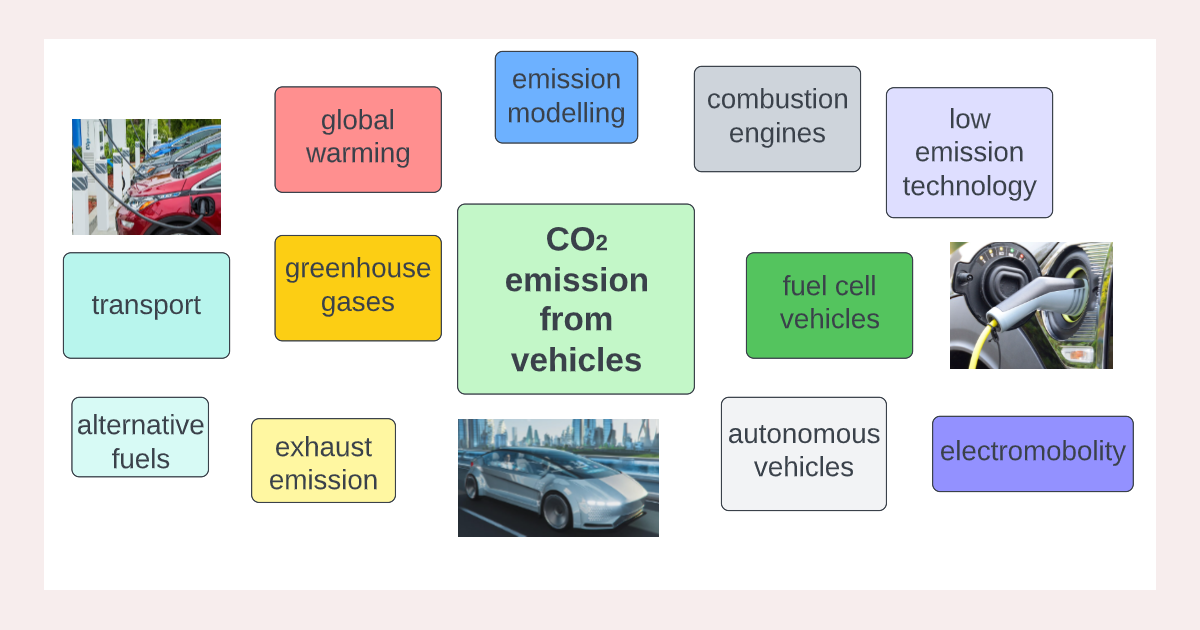CO2 Emissions from Vehicles (Volume II)
A special issue of Energies (ISSN 1996-1073). This special issue belongs to the section "B: Energy and Environment".
Deadline for manuscript submissions: 31 July 2024 | Viewed by 9987

Special Issue Editors
Interests: emission; exhaust gases
Special Issues, Collections and Topics in MDPI journals
Interests: transport; combustion engines; exhaust emission; vehicle testing; combustion analysis; electric vehicles; alternative fuels; hybrid vehicles; hydrogen vehicles
Special Issues, Collections and Topics in MDPI journals
Interests: vehicle emission; engine emission
Special Issues, Collections and Topics in MDPI journals
Special Issue Information
Dear Colleagues,
The problem of greenhouse gas emissions is now the largest challenge facing humanity, one that must be solved as soon as possible. In particular, the emission of greenhouse gases from transport contributes a significant share of global human anthropogonic emissions. Therefore, it is crucial that the scientific community look for solutions that will allow us to reduce the emissions of these gases. One of the main gases emitted by fuel combustion in vehicles is CO2.
This Special Issue aims to encourage scientists to look for solutions from a wider set of perspectives, both locally and globally. We welcome engine solutions, after-treatment systems, and concepts that have a chance of being implemented and thus contribute to environmental protection. The submission of articles on advanced, future-oriented topics will be important to this Special Issue, especially investigations of the large-scale electrification of vehicles and the impact of these solutions on the decarbonization of transport. We also encourage authors to submit papers related to the emissions, modelling different aspects of emissions using modern artificial intelligence and machine learning techniques. Submissions may either be in the form of original research articles or comprehensive reviews (e.g., legislative) on topics which are consistent with the aims and scope of this Special Issue.
Dr. Maksymilian Mądziel
Prof. Dr. Kazimierz Lejda
Dr. Artur Jaworski
Guest Editors
Manuscript Submission Information
Manuscripts should be submitted online at www.mdpi.com by registering and logging in to this website. Once you are registered, click here to go to the submission form. Manuscripts can be submitted until the deadline. All submissions that pass pre-check are peer-reviewed. Accepted papers will be published continuously in the journal (as soon as accepted) and will be listed together on the special issue website. Research articles, review articles as well as short communications are invited. For planned papers, a title and short abstract (about 100 words) can be sent to the Editorial Office for announcement on this website.
Submitted manuscripts should not have been published previously, nor be under consideration for publication elsewhere (except conference proceedings papers). All manuscripts are thoroughly refereed through a single-blind peer-review process. A guide for authors and other relevant information for submission of manuscripts is available on the Instructions for Authors page. Energies is an international peer-reviewed open access semimonthly journal published by MDPI.
Please visit the Instructions for Authors page before submitting a manuscript. The Article Processing Charge (APC) for publication in this open access journal is 2600 CHF (Swiss Francs). Submitted papers should be well formatted and use good English. Authors may use MDPI's English editing service prior to publication or during author revisions.
Keywords
- transport
- autonomous vehicles
- CO2 emission
- emission modelling
- fuel consumption
- exhaust emission
- global warming
- greenhouse gases
- combustion engines
- electromobility
- hybrid and electric vehicles
- fuel cell vehicles
Planned Papers
The below list represents only planned manuscripts. Some of these manuscripts have not been received by the Editorial Office yet. Papers submitted to MDPI journals are subject to peer-review.
Title: Decarbonization of urban transport in the context of infrastructure and operation of urban bus projects in Rzeszów (Poland)
Authors: Artur Jaworski; Maksymilian Mądziel; Hubert Kuszewski
Affiliation: Faculty of Mechanical Engineering and Aeronautics, Rzeszow University of Technology, 35-959 Rzeszów, Poland
Abstract: The emissions problem mainly affects conurbations. One solution to reduce emissions in these areas is to promote sustainable transport solutions. Within cities, the organization of public transport plays a key role. This paper is concerned with calculating the reduction in vehicle emissions, including CO2 emissions, in relation to the implementation of infrastructure and operation projects for urban buses. As a result of the analyses, the article presents illustrative results of CO2 emission reductions in the area of Rzeszów (Poland). In particular, the analyses cover emission calculations for several project relay scenarios taking into account the old bus fleet, the post-replacement fleet increasing the share of modern buses meeting the EURO6 standard powered by diesel fuel, and a future scenario taking into account the increased share of hybrid and electric vehicles.







